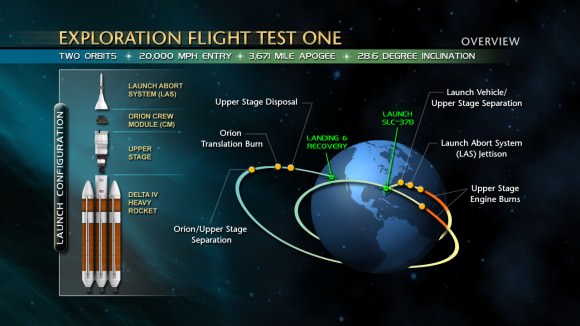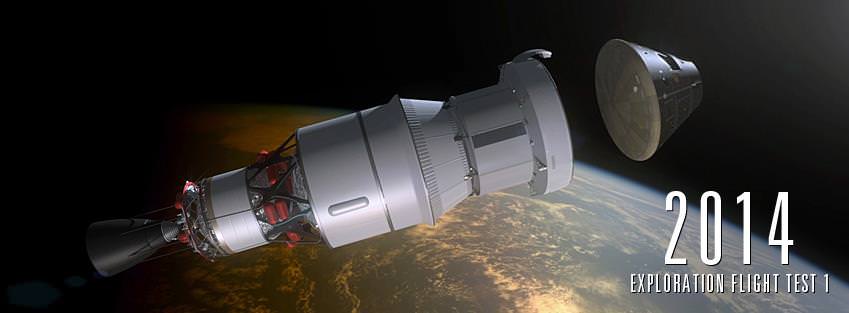[/caption]
NASA is on course to make the highest leap in human spaceflight in nearly 4 decades when an unmanned Orion crew capsule blasts off from Cape Canaveral, Fla., on a high stakes, high altitude test flight in early 2014.
A new narrated animation (see below) released by NASA depicts the planned 2014 launch of the Orion spacecraft on the Exploration Flight Test-1 (EFT-1) mission to the highest altitude orbit reached by a spaceship intended for humans since the Apollo Moon landing Era.
Orion is NASA’s next generation human rated spacecraft and designed for missions to again take humans to destinations beyond low Earth orbit- to the Moon, Mars, Asteroids and Beyond to deep space.
Orion Video Caption – Orion: Exploration Flight Test-1 Animation (with narration by Jay Estes). This animation depicts the proposed test flight of the Orion spacecraft in 2014. Narration by Jay Estes, Deputy for flight test integration in the Orion program.
Lockheed Martin Space Systems is making steady progress constructing the Orion crew cabin that will launch atop a Delta 4 Heavy booster rocket on a two orbit test flight to an altitude of more than 3,600 miles and test the majority of Orion’s vital vehicle systems.
The capsule will then separate from the upper stage, re-enter Earth’s atmosphere at a speed exceeding 20,000 MPH, deploy a trio of huge parachutes and splashdown in the Pacific Ocean off the west coast of California.
Lockheed Martin is responsible for conducting the critical EFT-1 flight under contract to NASA.
Orion will reach an altitude 15 times higher than the International Space Station (ISS) circling in low orbit some 250 miles above Earth and provide highly valuable in-flight engineering data that will be crucial for continued development of the spaceship.

“This flight test is a challenge. It will be difficult. We have a lot of confidence in our design, but we are certain that we will find out things we do not know,” said NASA’s Orion Program Manager Mark Geyer.
“Having the opportunity to do that early in our development is invaluable, because it will allow us to make adjustments now and address them much more efficiently than if we find changes are needed later. Our measure of success for this test will be in how we apply all of those lessons as we move forward.”
Lockheed Martin is nearing completion of the initial assembly of the Orion EFT-1 capsule at NASA’s historic Michoud Assembly Facility (MAF) in New Orleans, which for three decades built all of the huge External Fuel Tanks for the NASA’s Space Shuttle program.
In May, the Orion will be shipped to the Kennedy Space Center in Florida for final assembly and eventual integration atop the Delta 4 Heavy rocket booster and launch from Space Launch Complex 37 at nearby Cape Canaveral. The Delta 4 is built by United Launch Alliance.
The first integrated launch of an uncrewed Orion is scheduled for 2017 on the first flight of NASA’s new heavy lift rocket, the SLS or Space Launch System that will replace the now retired Space Shuttle orbiters
Continued progress on Orion, the SLS and all other NASA programs – manned and unmanned – is fully dependent on the funding level of NASA’s budget which has been significantly slashed by political leaders of both parties in Washington, DC in recent years.
…….
March 24 (Sat): Free Lecture by Ken Kremer at the New Jersey Astronomical Association, Voorhees State Park, NJ at 830 PM. Topic: Atlantis, the End of Americas Shuttle Program, Orion, SpaceX, CST-100 and the Future of NASA Human & Robotic Spaceflight

